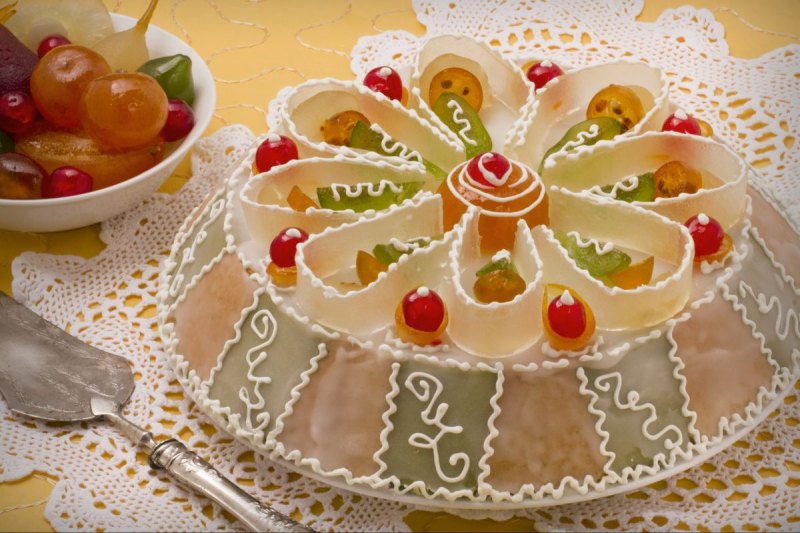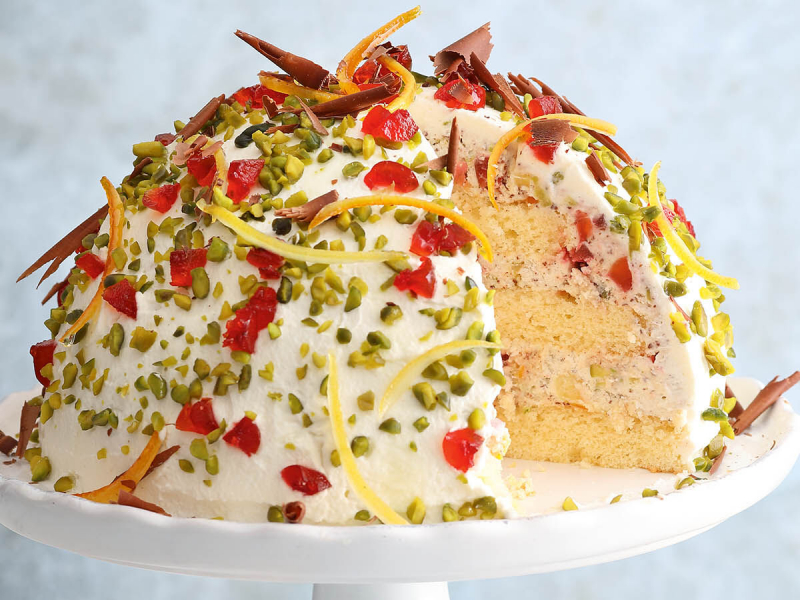Cassata
Cassata consists of a round sponge cake moistened with fruit juices or liqueur and layered with ricotta cheese and candied fruit, a filling also used with cannoli. Cassata has a shell of marzipan, pink and green colored icing, and decorative designs. Cassata may also refer to a Neapolitan ice cream containing candied or dried fruit and nuts.
Arguably Sicily’s most famous dessert. It is believed that cassata originated as a simple sugar, egg, and ricotta cheesecake while its name is thought to have been derived from the Arabic word qas’ah, which refers to the bowl used to make the cake. Some say its name derives from the Arabic word qas’at—a cake pan—and others from the Latin term for cheese, caseus. But what could actually have happened is that Arabs brought sugar-producing mills to the south of Italy and this, combined with local baking traditions and a love for dairy, gave origin to a sugary cake filled with cheese. Regardless of the origin of the name or its inventor, cassata is a celebratory cake associated with Easter, and bakeries in Italian neighborhoods around the world all have a different take on it.
This is traditionally a winter and spring specialty, and it is most often served around Easter. It’s usually chilled for 3 hours before serving. By the 14th century, cassata had become a dessert of the aristocracy, and even today, few people outside of the culinary world are brave enough to prepare this elaborate delicacy at home.
Country: Sicily, Italy














